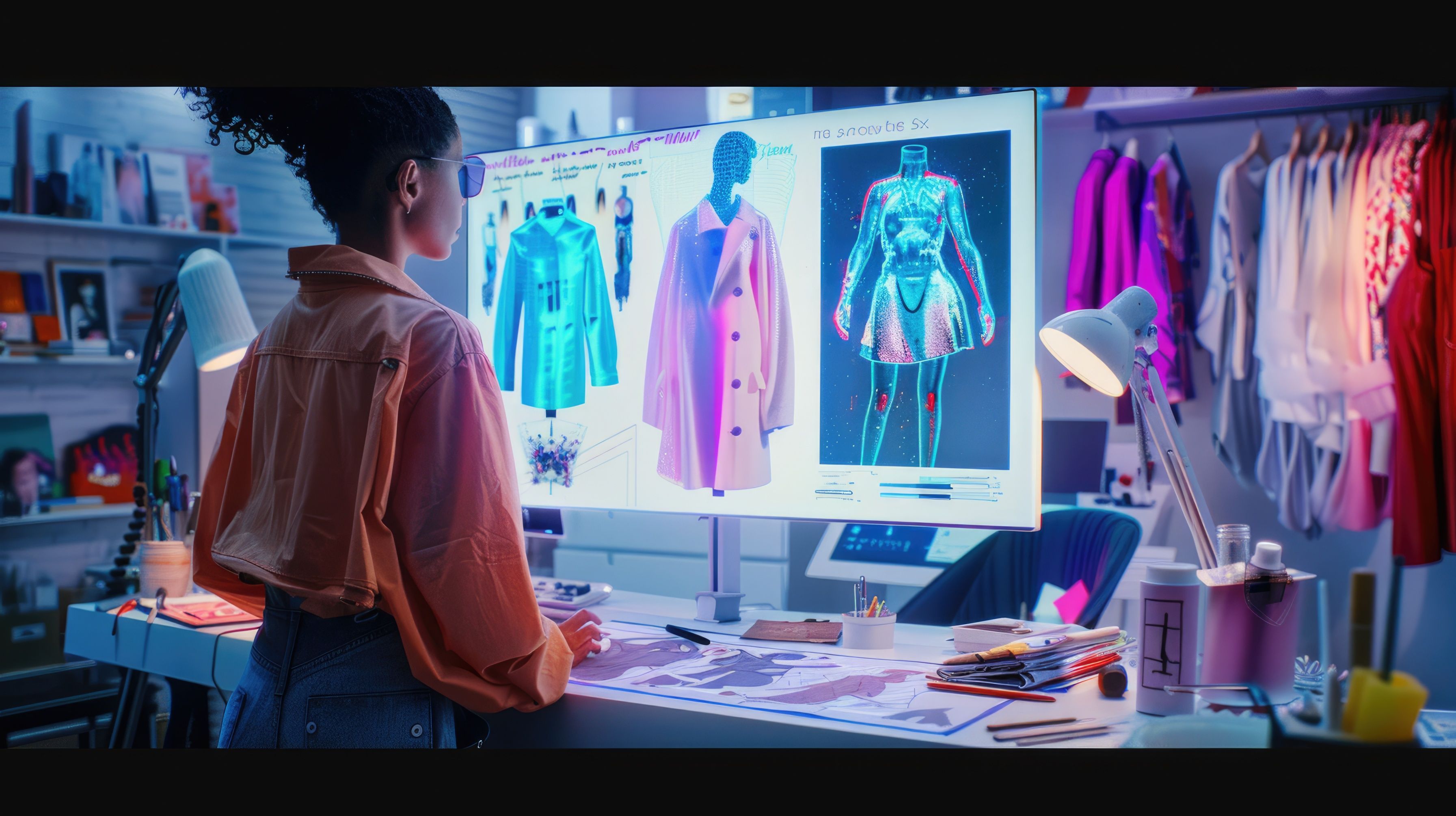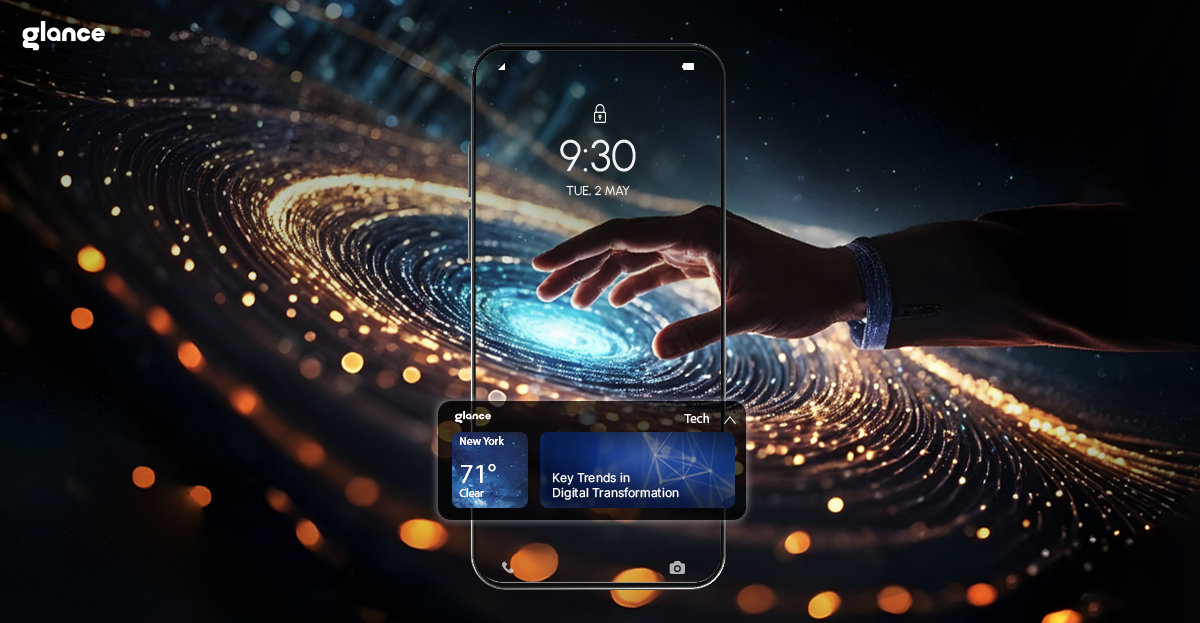AI Stylist vs Human Stylist: Who Wins in 2025 Fashion?

A New Era of Styling: Intelligence or Intuition?
In 2025, fashion is no longer a binary between haute couture and streetwear. It’s a hyper-personalized landscape shaped by one big question: who understands your style better, an AI stylist powered by generative AI or a human fashion expert with years of taste and instinct?
As digital commerce platforms evolve and real-time personalization becomes non-negotiable, the idea of hiring a personal stylist is being reimagined—or replaced. With platforms likeGlance AI, users can generate daily looks that reflect their mood, scrolling behavior, silhouette, and even the time of day.
But can a generative model really understand the nuance of human identity, expression, and evolution? Or is this the final nail in the coffin for traditional fashion consultation?
Let’s break it down: AI Stylists vs Human Stylists—the who, the how, the future.
What Powers the AI Stylist: Generative AI in Action
AI stylists like Glance are not rule-based bots. They’re dynamic systems powered by generative AI, a form of machine learning that creates, not just categorizes. Instead of serving templates, it generates new looks based on:
- Your historical engagement patterns
- Behavioral signals like swipe speed, dwell time, time of day
- Contextual data: weather, trends, upcoming events
- Aesthetic archetypes you resonate with
The result? Real-time outfit curation that evolves with you.
Glance’s AI Twin doesn’t just remember your last scroll. It builds an ever-evolving model of you—style DNA, mood shifts, shopping windows, and all. It then renders hyperreal visuals through its Visual Re-Synthesis Engine, personalized to your skin tone, face shape, and lifestyle energy.
With AI, there are no "bad days," no missed signals. It’s fashion, filtered through generative intelligence.
The Human Stylist: Personal Touch, Timeless Perspective
A human stylist, at their best, is an intuitive mirror. They can read a room, a face, a feeling. They can talk through insecurities, work around budget constraints, and offer tactile wisdom from years of dressing different body types.
They offer:
- Emotional reassurance
- Live real-time feedback and adjustments
- Insider access to luxury pieces and designer previews
- Styling that often transcends trend cycles
But there are caveats: human stylists come with scheduling constraints, geographical limits, variable pricing, and subjectivity.
And unlike Glance’sAI personal stylist model, humans don’t scale. They can’t interpret 1,000 behavioral data points in milliseconds. They can’t optimize product matching across live retail inventories.
Comparison Table: Head-to-Head in 2025
|
Feature |
Human Stylist |
AI Stylist (Glance) |
|
Personalization |
Subjective, experiential |
Data-driven, real-time, behavioral |
|
Accessibility |
Appointment-based |
App-first, 24/7 |
|
Cost |
Premium or sessional |
Included in platform experience |
|
Visual Output |
Verbal guidance |
Hyperreal lookbooks matched to your Digital Twin |
|
Inventory Matching |
Limited, static |
Dynamic, live product auctions across brands |
|
Emotional Intelligence |
High |
Learned through micro-signals |
|
Scalability |
One-to-one |
One-to-many with high precision |
In terms of convenience, real-time delivery, and data-informed precision, AI is the clear frontrunner.
Why Generative AI Outperforms Human Stylists at Scale
Let’s face it: we no longer have time to try on ten looks for one event. Gen Z and millennials want style on demand. They want looks that work for brunch, the airport, and dinner, without changing twice. Enter: generative AI.
Unlike traditional recommendation engines, Glance’s generative fashion system actually creates looks. It doesn’t rely on existing outfit pairings. It generates new style ideas by analyzing what’s worked for you, what you’ve skipped, and what’s trending in your world—not just the market.
What enables this evolution?
-
Similarity Engine: Learns your vibe by comparing you to lookalike style profiles
-
Timing Intelligence: Adjusts suggestions based on your shopping windows and mood shifts
-
Purchase Intent Prediction: Knows what you’re likely to buy before you add to cart
It’s styling without having to explain yourself. That’s power.
Emotional Context: Can AI Understand Feelings?
A common criticism is that AI lacks soul. That it doesn’t know how we feel in our clothes.
But here’s the kicker: platforms like Glance don’t need to feel emotions to measure them. Through dwell time, swipe behavior, and vibe indicators, the system detects what resonates.
Fast swipes mean rejection. Long holds mean curiosity. Repeated cart abandonment of similar pieces? That signals conflict or confusion. AI stylists interpret these signals and refine.
Human stylists ask you how you feel. AI stylists measure how you behave. That difference is subtle, but transformative.
Inclusivity, Style Equity, and Reach
Traditional styling often comes with gatekeeping. Geography, pricing, body bias, and industry elitism make personalized styling inaccessible for many. Glance AI’s stylist model changes that.
AI Stylists are:
-
Inclusive by Design: Every shape, tone, and tempo gets the same access to high-quality visuals and styling.
-
Behavior-Led: Looks evolve based on usage, not assumptions about identity.
-
Scale-Ready: Whether you're shopping in Brooklyn or Boise, your AI Twin understands you.
In 2025, equity in fashion isn’t just about sizes or shade ranges. It’s about intelligent access. WithGlance’s wardrobe styling AI, personalization isn’t a luxury—it’s the baseline.
The Cultural Relevance Gap
Human stylists bring cultural knowledge. They understand etiquette, occasion nuance, and identity expression. Can AI match that?
Short answer: increasingly, yes.
Glance AI learns across users in similar cultural archetypes. It picks up on:
- Color theory applications across ethnicities
- Style cues based on age, location, and lifestyle
- Sequence behavior (e.g., what users from similar backgrounds add to cart after rejecting certain styles)
By comparing patterns across vast cultural datasets, generative AI becomes not only reactive, but contextually aware.
Case Study: Capsule Wardrobe Curation with AI
Consider this: a user wants a summer capsule wardrobe that works for work-from-home, weekend outings, and travel. A human stylist might interview, research, then recommend. Glance AI, meanwhile, scans the user’s past engagement patterns, identifies repeat favorites, and cross-references real-time availability.
In minutes, the user receives a hyperreal lookbook with full-body visuals, curated into:
- Work sets
- Airport looks
- Layer-friendly day-to-night fits
Outfits are not just shown—they are shop-ready. Items are pulled from live inventories across partnered brands.
That’s generative AI in styling. Not just efficient, but actionable.
The Hybrid Future: When AI and Humans Collaborate
Here’s the truth: it’s not a binary war. The future of fashion styling is hybrid.
Human stylists are becoming creative directors and brand therapists. They guide long-term style identity, while AI handles day-to-day curation, trend-spotting, and product matching.
We already see this in:
- Influencers using Glance AI to co-create shoppable lookbooks
- Stylists integrating AI tools into onboarding assessments
- Retail brands using AI to prep personalized fitting sessions
In this dynamic, generative AI handles the infinite scroll. Humans handle the style story arc.
Conclusion: Style, Evolved
AI Stylists are not replacing humans. They’re replacing inefficiency. In 2025, the clear winner is not human vs machine. It’s the consumer, who gets to choose both.
With generative AI powering platforms like Glance, personalization is no longer a luxury. It’s table stakes. Human stylists bring heart. AI stylists bring scale.
The smartest brands and style seekers in 2025 know: the future of fashion isn’t just styled. It’s intelligently designed.
Further Reading:
- AI Personal Stylist: Smart Fashion Curation Made Just for You
- Fashion Stylists to AI: The Evolution of Personal Styling
- Wardrobe Stylist AI: How Glance is Redefining Closet Curation
Note: IndiBlogHub features both user-submitted and editorial content. We do not verify third-party contributions. Read our Disclaimer and Privacy Policyfor details.







